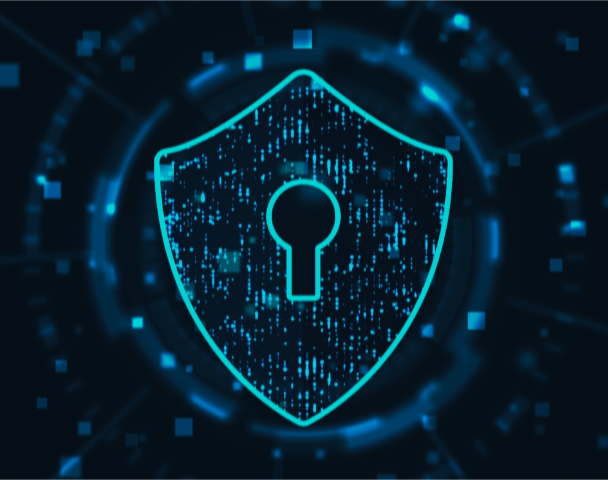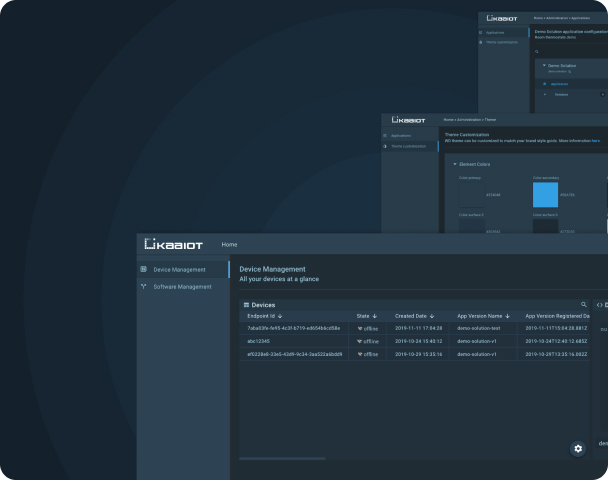Reducing edge device management complexities with an IoT platform
With the advent of IoT, edge device management has attained a whole new level of importance for businesses. Edge devices originated within the telecom industry, but they are no longer limited to switches, routers, and modems. Now there are countless smart gizmos that connect to the Internet directly or with a little help from IoT gateways. Managing these diverse solutions for non-tech companies can be anything but easy. That’s why businesses should learn how to reduce complexities of edge device management in order to take advantage of the global IoT disruption.
Luckily, there are tools that can help them cope with technical intricacies of IoT-powered device management. Just like Telecom operators rely on complex operational support systems (OSS) to manage and monitor their network nodes, any organization can use an IoT platform - which can be also called an edge device management platform - to orchestrate operation of smart sensors, meters, controllers, and appliances. The best platforms successfully bridge the technical expertise gap that usually stands in the way of each company’s IoT innovations and help them address end-to-end use cases, which may also include data analytics, edge processing, and SaaS redistribution.
But it all starts with streamlined edge device management. So, let’s consider how an IoT platform helps overcome the following 7 challenges in IoT projects.
Connecting new devices to the cloud
An IoT platform sets the stage for connecting devices to the cloud. In many cases, it comes in one package with the cloud, and functions as an intermediary between your devices and some remote servers. It takes care of deployment and connectivity so that you can go ahead and add your devices right away. Granted, you may opt for a self-hosted solution and deploy an IoT platform on your cloud infrastructure of choice.
Anyway, the first task for the platform user is to add a new device to the system. If that sounds like a fairly straightforward thing to do, consider that in many cases the user may have to spend days studying the platform’s functions, or even be required to use a command console before adding their first device. Complex user experience that is heavily built for engineers can severely limit the adoption of such a system inside your organization.
And that is the first challenge that truly user-centric edge device management platforms help to overcome. By offering a very straightforward, wizard-like UI, they enable users with no prior technical expertise to quickly add their smart devices to the cloud and use them for their business or other meaningful activity.
Keeping track of device inventory
One of such activities is keeping track of your connected devices, their operational status, executed commands, and other data. In an IoT platform like Kaa, each physical device is assigned a digital twin within the system, which allows you to store all the device-related data in a well-organized manner. Also, this feature is the foundation for efficient asset management when it comes to managing hundreds or thousands of connected devices. It includes structured metadata view, filtering, sorting, and search capabilities.
Something as simple as finding the exact device you need among numerous others in your system saves time and organizes your work. From here, you can deep dive into analytics data, generate reports, or edit configurations without feeling like you’re getting lost in a device jungle.
Pairing devices with user dashboards
One of the most desirable features of an IoT platform is graphical dashboards that display telemetry, location, and numerous other device data. And while in most cases setting up your first dashboard will be easy, there are far greater challenges lying ahead. As the number of devices grows, it may get difficult for users to navigate between different dashboards and customize them according to a specific device context.
By using the concept of digital twins, an IoT platform helps put your dashboard in order as much as it does with device inventory, if not in an even more elegant and sophisticated manner. An IoT platform allows establishing flexible relationships between devices and user dashboards so that you can jump between related entities in a single click. It helps prevent cluttered UI and minimizes manual data entry.
This is actually why outdated asset management solutions can hardly be utilized for IoT edge device management - because not only is edge device management a large feature in and of itself, but it also sets the ground for dashboards, analytics, and other advanced IoT features.
Enforcing device and user security
Edge devices are the most vulnerable part of IoT ecosystems. The task of an IoT platform is to strengthen their security and prevent any potential breaches to affect other endpoints on your edge. This is usually achieved via a number of out-of-the-box mechanisms, including data encryption, device and user authorization, user role management, etc. While user credentials management is something we have all gotten used to, an IoT platform typically makes a strong impact on device credentials management. They enable admins to suspend or revoke endpoints’ access rights just as easily. Also, device credentials management helps ensure that any device access data is not persisted by the platform.
Managing device groups
Device groups and filtering capabilities provided by modern IoT platforms greatly simplify edge device management for large fleets of connected assets. You can organize such groups by specific attributes and manage them as single entities. One of the most valuable use cases for device groups is bulk distribution of software updates, which you can also do for the purpose of A / B testing. In Kaa, we take the concept of a device group one step further by introducing IoT applications, which bring together devices of a similar type in order to ensure their unified product lifecycle and coherent functional evolution.
Distributing software updates
Over-the-air software updates are absolutely essential to enterprise-grade IoT projects. Consumer electronics devices get updates all the time from manufacturers; they also do canary testing on limited device groups and gather user feedback via device analytics. You can have all these features out of the box with a modern IoT platform. By using the software updates feature alone, you can easily roll out updated software / firmware specifications to your devices, track currently installed software versions, and manage software update compatibility matrices. Paired with analytics, you can also have customer response insights.
Managing IoT applications
In IoT, edge devices can be anything from a light bulb to a complex industrial robot. In order to more effectively manage their diverse functional specifics, edge devices need to be also represented as IoT applications. For example, a smart fridge can be thought of as both a device and an umbrella application that brings together individual smart fridges within your solution. Now if you need to manage a specific device, you have your device management workspace; and if you need to configure functional specs, you have your application management workspace. As a result, by using an IoT platform you can dramatically expand your edge device management capabilities and achieve simplicity by encompassing and automating complexity.
One great aspect of IoT applications is that you can also have multiple versions of a single application and, thus, group your devices according to functional modifications, e.g. basic, advanced, professional. Another use case for application versions is simply running tests and experiments with your devices by adding or retiring features while keeping your old stable versions up and running.
Going forward: edge processing and edge-to-cloud architectures
The illustrated edge device management capabilities of modern IoT platforms pave the way towards more advanced IoT solution architectures that process data on the edge as well as in the cloud. Huge amounts of data processed in near real time eventually make cloud-centered architectures costly and unreliable. That’s why enterprises are already leveraging edge analytics and combined edge-to-cloud architectures for high-load IoT solutions. And the practice shows that when they get their edge device management right, it makes other things, which were once complex or even impossible, totally doable.
Related Stories
- Platform updates
Identity and Access Management: Where We Were & Where We Are Now
We live in a digitized era that would have been unthinkable decades ago and almost everything we do depends on data processes...
- Platform updates
The Kaa IoT Cloud is Available for Free Trial!
We are excited to announce that the Kaa IoT Cloud (alpha) is now available for free for everyone! This is the Kaa Enterprise IoT Platform...
- Platform updates
New Release: Kaa 1.1 is Here!
We are delighted to announce the new Kaa 1.1 release, which offers multiple improvements on configuration management...



